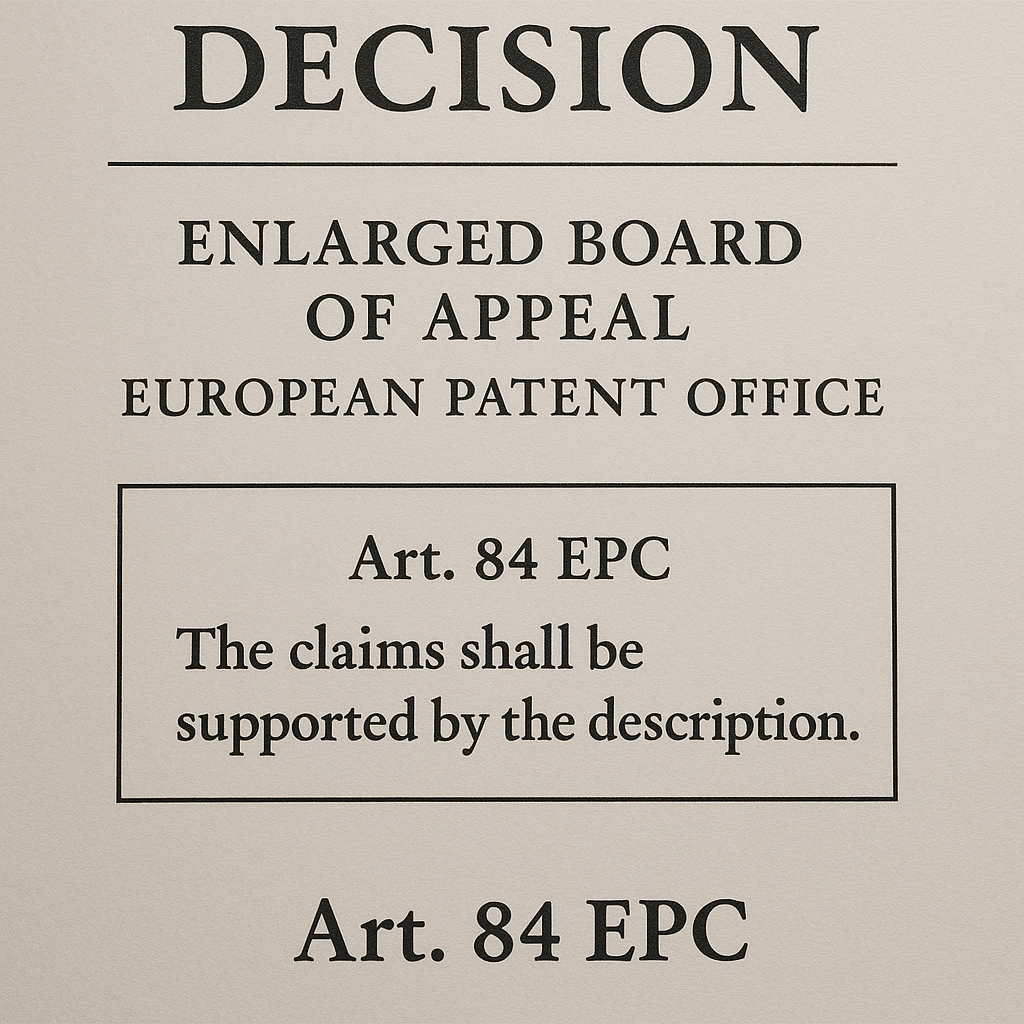
New decision of the Enlarged Board of Appeal (EBoA) of the European Patent Office (EPO)
Context
Art. 84 EPC states “The claims shall define the matter for which protection is sought. They shall be clear and concise and be supported by the description.”
The referral concerns an appeal after opposition of a patent where the claims have a narrower scope than the scope of the description.
Important terminologies used in the claims deserve to be defined within the description part to such an extent that “A patent is its own dictionary”: within a patent, a wording used in the claims can thus have a different meaning than found in a regular dictionary.
Hence, quite often, the Description part can either support a narrow interpretation of the claim language, with clear benefit for patentability purposes, or allow a broader interpretation, which is nice to have in case of infringement actions, especially in judicial systems with bifurcation between decisions on validity and on infringement.
The Decision
The present decision answers the question on how to interpret the scope of the claims for patentability purposes.
The relevant legal bases are dispersed across three parts of the European Patent Convention:
- Patentability ( 52-57 EPC),
- Extent of the protection ( 69 EPC and its protocol on the interpretation) and
- 84 EPC,
and neither Art. 69 nor Art. 84 EPC is entirely satisfactory for claim interpretation when assessing patentability.
The EBoA confirms that the claims form the starting point for assessing patentability, but also that there is always a need to consult the description and drawings to interpret the claims and not only in unclear or ambiguous situations. The EBoA also agrees with the “harmonization philosophy” behind the EPC to follow the practice of National Courts and of the Unified Patent Court. As patent practitioner, we welcome this part of the decision.
Further considerations
In addition, there have been important expectations that the EBoA would also clarify to what extent the description of a patent should be brought into strict conformity with the claims in their latest version. In practice, many Patent Attorneys are frustrated by the requests imposed by some Examining Divisions of the EPO to extensively amend the description, so that it exactly mirrors the claims. This practice is time-consuming, not understood by clients, and present legal risks related to “added subject matter” where the remaining subject matter after the excision of several embodiment risks to be considered as another invention, as compared to the patent application as originally filed, jeopardizing the validity of the Patent.
However, the EBoA did not address the issue related to the need, or not, to amend the description as strictly as imposed by some Examining Divisions of the EPO. The EBoA only clarifies that Art. 84 cannot be a legal basis for the interpretation of the claims, which opens, we hope, a good option to challenge the alleged need to amend too much the Description.
Philippe de Diesbach & Stefania Acciardo
